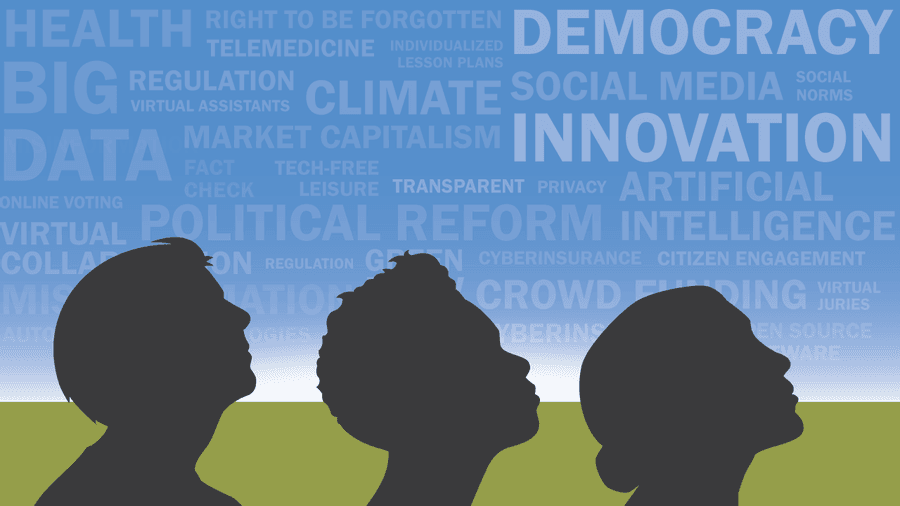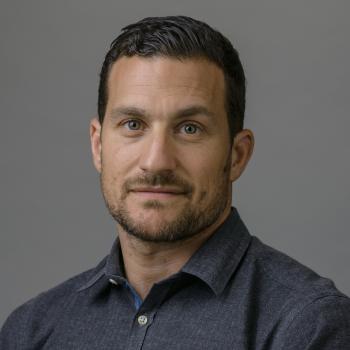Marc Andreessen: How Risk Taking, Innovation & Artificial Intelligence Transform Human Experience
Curated from: Huberman Lab
Ideas, facts & insights covering these topics:
30 ideas
·9.38K reads
31
1
Explore the World's Best Ideas
Join today and uncover 100+ curated journeys from 50+ topics. Unlock access to our mobile app with extensive features.
Common Big 5 Personality Traits of Innovators
- Openness to New Ideas
- High Conscientiousness
- High disagreeableness (ornery, not easily dissuaded)
- High IQ (Ability to synthesize information quickly)
- Possibly Low Neuroticism (Ability to handle stress)
Innovators' Traits Are Not Deterministic. They need a combination of traits, make choices in life, and have context.
99
1.05K reads
Testing for Innovators, Silicon Valley
People do indeed try to fake having innovative qualities. The amount of this behavior goes along with how the stock market is doing.
Testing for innovators:
- To figure out if someone is a true innovator, you need to ask them lots of detailed questions to see how well they really know their stuff and how committed they are.
- Pretenders often struggle to provide in-depth answers and their knowledge fuzzes out as questions become more detailed.
- True innovators have spent years obsessing over the details of whatever it is they are trying to do and they know so much more about it than you ever will.
95
557 reads
Innovation and Unpredictability
Becoming innovative often involves making decisions within an unpredictable world. The future is hard to predict, and many variables come into play, like the fog of war. To prepare, innovators imagine different paths and scenarios.
- Unpredictability: A key aspect of innovation
- Pre-Planning: Imagining and preparing for various scenarios
- Pivot: Adjusting and adapting strategies as situations change
Great innovators consider their plans as hypotheses - firm but open to testing and modifications through the execution process.
91
470 reads
Intrinsic vs. Extrinsic Motivation
Great innovators are establishing neural circuitry that reinforces the self and the process of being oneself.
Extrinsic vs. intrinsic motivation:
- Steve Jobs emphasized the journey as the reward, an intrinsic motivation.
- Competing against oneself and self-improvement are intrinsic motivators.
Comparison with successful giants in the same ecosystem encourages higher goals (e.g. Silicon Valley).
91
443 reads
Innovators & Personal Relationships
Being in a relationship with an innovator has its challenges:
- Their highly disagreeable traits can cause conflicts.
- Their strong work ethic and drive may leave limited time for personal and family life.
- They often require significant independence.
- Their need to constantly adapt and change plans may be unsettling for partners seeking stability.
- Some may take risks in all aspects of their lives, creating instability.
- If their life becomes too stable, they may feel the need to shake things up.
94
355 reads
Extreme Risk-Taking in Business and Personal Life
Learn how to be an extreme risk-taker in business and lead a calm personal life. Benefits:
- Be like successful businessman Marc and never use debt in business.
- Enjoy a peaceful and passive personal life with no extreme sports or sauna use.
- Follow in the footsteps of composer Bach, who also had a sedate personal life.
87
349 reads
Public vs. Elite
Marc thinks that the public is more open and forgiving than ever.
- The elites are leading cancel culture. It is an elite phenomenon disguised as a grassroots movement.
- The public is more forgiving of what previously might have been considered extreme behavior.
90
339 reads
Trust in institutions over time:
- Congress and journalists have the lowest levels of trust, with scores around 10%.
- Gallup polls have tracked trust in institutions since the 1970s.
- Trust in many categories of institutions started at around 60-70% but has steadily declined over the past 50 years.
- Big business and tech companies maintain higher trust levels.
87
320 reads
Reform & Institutions, Universities vs. Business
Can institutions be reformed? The role of a reformer is not a common one in society.
Universities operate on outdated systems, but they still function, despite notable issues (like the New York subway.)
- Do most people view institutions as having flaws, yet continue to boast when their child is accepted into a prestigious university like Stanford or UCLA?
- Should we replace the old institutions with new ones or start from scratch?
This is a great topic of study, especially in regards to how student loans function.
89
265 reads
Capitalism Works: Creative Destruction
In a capitalist system, when old companies fail, they are replaced by newer and better ones. This is a sign of a healthy market economy.
Unlike other industries, it is illegal for companies to conspire together in the business world. In contrast, in academia, universities can work with accreditation bureaus to control competition.
Creative destruction is necessary for progress in business, but many people outside of this world are resistant to change.
90
255 reads
Religious impulses in our time don’t show up as overtly religious, they show up in a secularized form.
MARC ANDREESSEN
88
266 reads
How does the current education model prevent innovation?
The risk of cancelation discourages risk-takers.
- Huberman keeps a secret hand-written file of everything he is afraid to speak about publicly and it’s getting much longer over time.
- He is afraid to put it in electronic form.
88
246 reads
I censor myself at the level of deleting certain things but I don’t contort what I do talk about.
ANDREW HUBERMAN
90
275 reads
History of Computers, Neural Networks, and AI
Computers modeled after the human brain have been around since 1943, leading to the concept of neural networks.
- In computer programs, bugs are always the programmer's fault, not the computer's, as computers have no judgment.
- When programming self-driving cars, traditional rules-based approaches won't work.
In the last decade, AI technology has significantly improved, particularly in vision recognition. Now, machines are far better at tasks like face recognition compared to humans, which was once thought unlikely.
87
239 reads
Apple vs. Google
The differences between Google’s and Apple’s approaches to AI:
- Google is superior in certain aspects because it can pool data for training AI
- Apple, on the other hand, values privacy and does not pool data.
- All of Apple’s AI has to work locally on devices, while Google’s AI can function in the cloud using pooled data
89
236 reads
Input Data Set
AI got better because of larger datasets.
Modern facial recognition AIs are trained on billions of photos from the internet.
The days of distinguishing “real” vs. “fake” are over. The “genie” of AI text generation is out of the bottle
86
225 reads
ChatGPT
Chat GPT works well because it’s trained on the entire internet of text:
- The version used today is trained on data up until September 2021.
- Most of this data was written by human beings, often under their own names.
- This data could be articles published in magazines, podcast transcripts, academic papers, etc.
- The authenticity of these texts can generally be trusted.
- Fake or parody articles are relatively rare.
86
216 reads
Public key cryptography
The most trusted channel would put out a unique public cryptographic key, and any content can be checked against this key to make sure it’s real. Who’s gonna run this?
- Government-run registries could turn into truth ministries, which is bad news.
- Company-run registries would be a big target for hackers.
- Maybe blockchain technology could do the trick – create a distributed database in the cloud.
87
214 reads
Quantum Internet
Quantum Internet solution:
- Basically, it secures internet communications by changing the translation or language super fast so it can’t be intercepted.
- Not an option now, but could be down the line.
88
215 reads
AI Positive Benefits, Medicine, Man & Machine Partnership
- Most people who aren’t informed are afraid of AI.
- Machines could have better bedside manners than human doctors.
- AI could help patients stick to their physical therapy or nutritional programs.
- The AI could be there all the time, infinitely patient, wise, and loving.
- The ideal scenario would be for both the AI and the human to work together.
88
197 reads
Marketing, Moral Panic & New Technology; Politics
Throughout history, every new technology has been met with a “moral panic”. These panics often led to predictions of doomsday scenarios.
Examples of past moral panics:
- The Satanic panic of the 1980s, concerns about heavy metal music, fears surrounding comic books in the 1950s, and anxieties over jazz music in the 1920s and 30s.
- There was even a moral panic triggered by the arrival of bicycles in the 1860s and claims about health issues, such as “bicycle face”.
87
191 reads
Three-stage societal response to new technologies:
- Denial.
- Rational counter-arguments.
- Name-calling.
AI has already moved past the denial stage, thanks to its long 80-year prehistory and sudden dramatic advancements.
The impact of a new technology primarily revolves around the reordering of status in society.
87
203 reads
The world is a very malleable place if you know what you want and you go for it with maximum energy and drive and passion the world will often reconfigure itself around you much more quickly and easily than you think.
MARC ANDREESSEN
94
186 reads
Innovator Development, Courage, Support
How to foster innovation in today’s world?
- You have to be signed up for the fight.
- It’s a contact sport, these aren’t easy roads.
- The advantage you have as an innovator is that at the end of the day, the truth actually matters.
Historically, it’s really hard to find an example of new technology that came into the world and was then pulled back.
If innovators feel fulfilled by their close relationships, they won’t need approval from the internet or public opinion.
89
180 reads
Small Groups vs. Large Organization
How can small groups defeat larger organizations? Large organizations have more resources but struggle with execution due to excessive overhead and bureaucracy:
- Many people need to be consulted and agree on decisions.
- Scheduling meetings takes time and delays decision-making and action.
- The internal dynamics are more similar to a nation-state than a company.
- The main competition in large companies is for the next promotion, and the biggest threat is often from within the company itself.
91
173 reads
Agility
Small companies or teams have the advantage of agility:
- They can organize quickly, address issues immediately, and move at a much faster pace.
- However, small teams don’t have the same resources or global coverage.
87
175 reads
“Wild Ducks”
Marc talks about IBM’s system, where most employees were expected to follow rules and procedures meticulously:
- There was a special category of employees known as “wild ducks,” innovators who were allowed to break the rules and create new things.
- They had the freedom to work independently, pull resources from other projects, and have direct access to the CEO.
- In the tech industry, “wild ducks” often get driven out and end up getting funded by venture capitalists.
90
160 reads
IDEAS CURATED BY
CURATOR'S NOTE
Marc and Andrew Huberman talk about the double-edged sword of risk-taking, the capacity to navigate uncertainty, public trust, universities, politics and the regulation of AI.
“
Similar ideas
10 ideas
23 ideas
20 Optimal Protocols for Studying & Learning
Andrew Huberman
Read & Learn
20x Faster
without
deepstash
with
deepstash
with
deepstash
Personalized microlearning
—
100+ Learning Journeys
—
Access to 200,000+ ideas
—
Access to the mobile app
—
Unlimited idea saving
—
—
Unlimited history
—
—
Unlimited listening to ideas
—
—
Downloading & offline access
—
—
Supercharge your mind with one idea per day
Enter your email and spend 1 minute every day to learn something new.
I agree to receive email updates



























